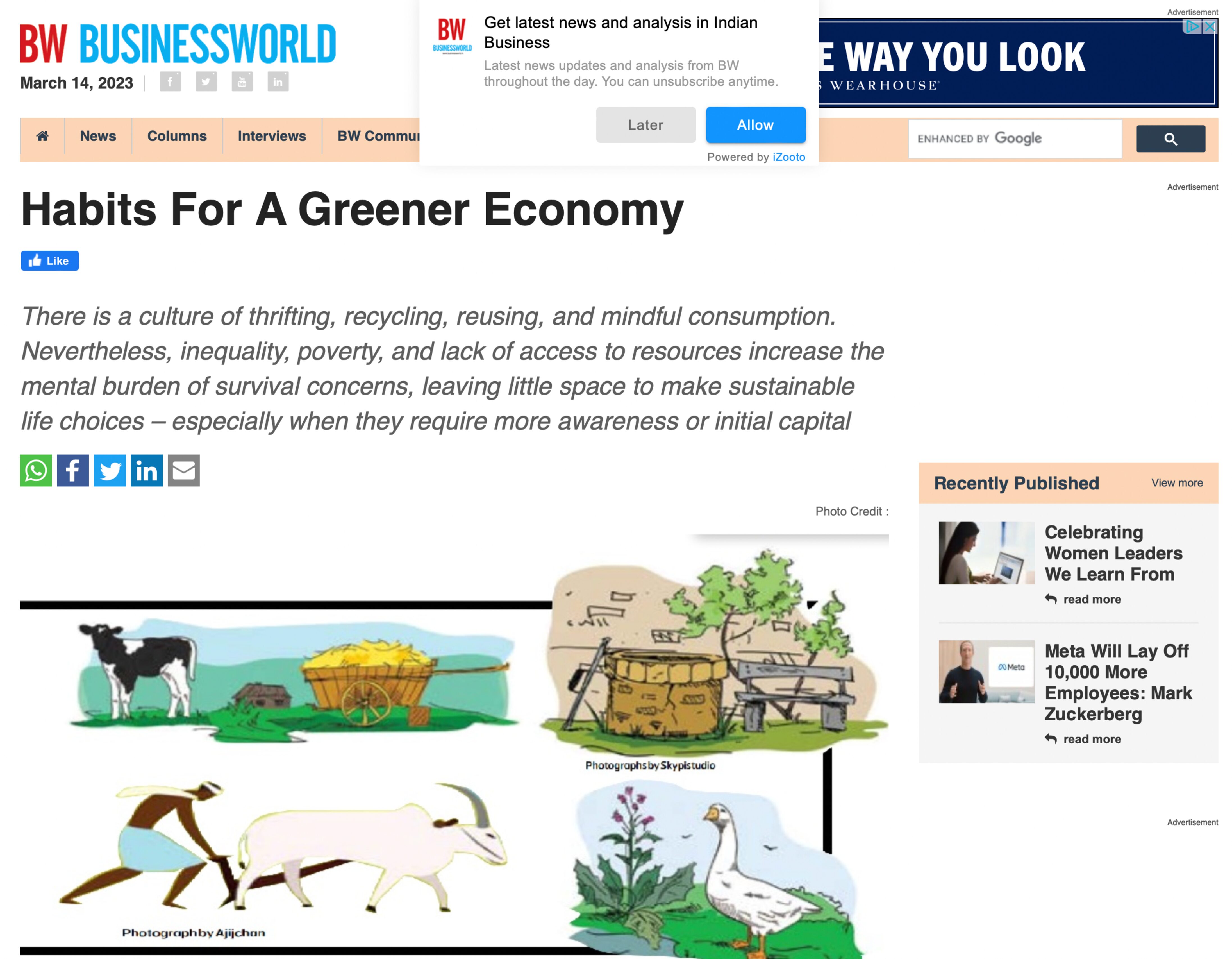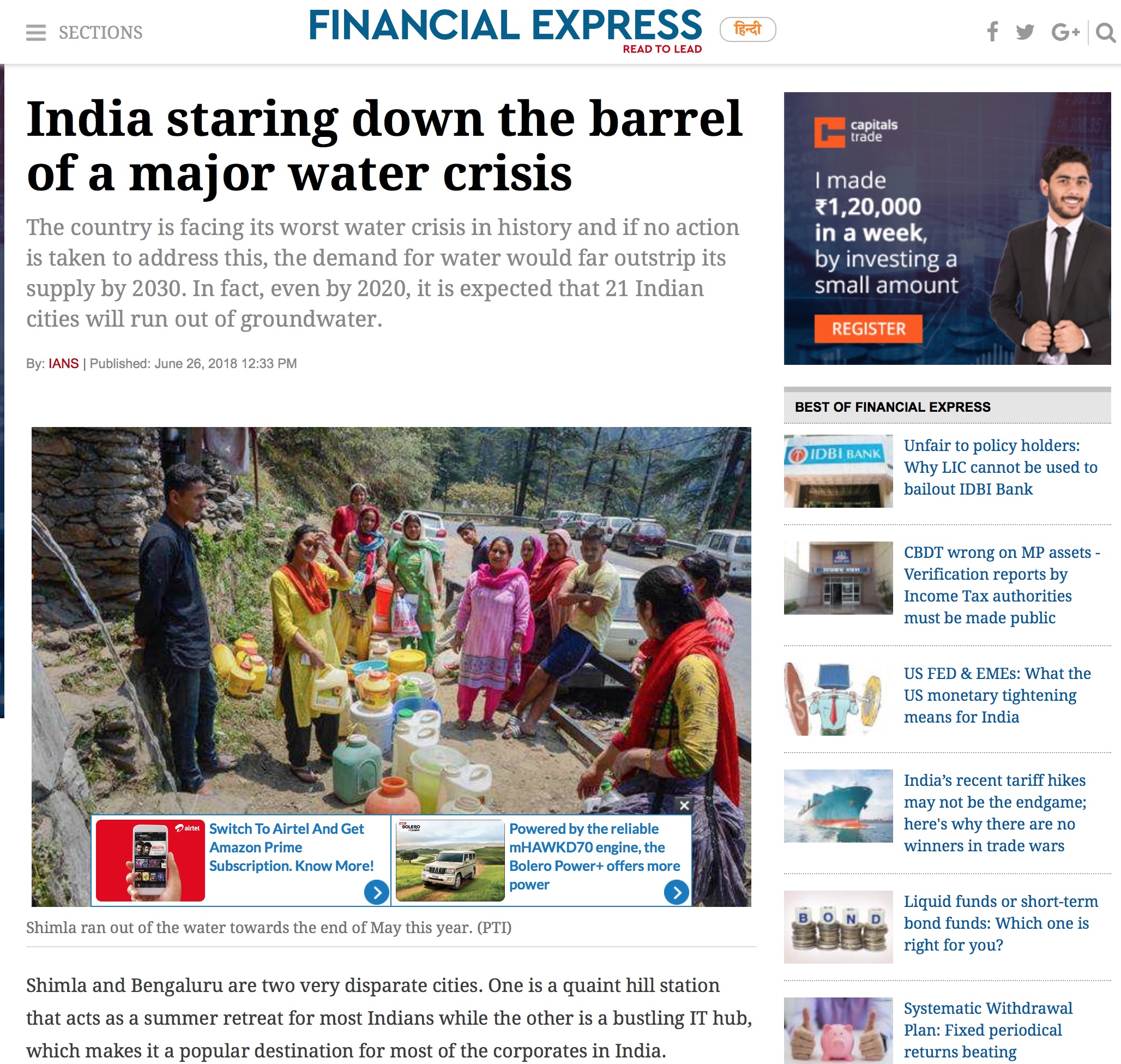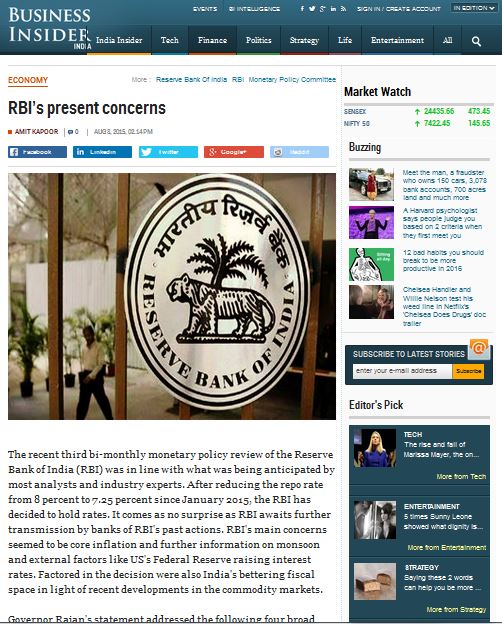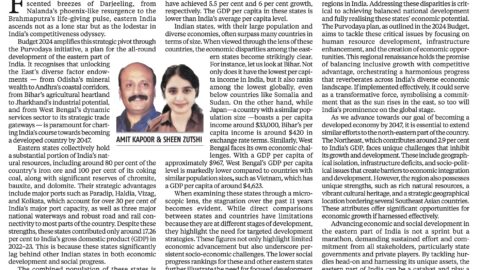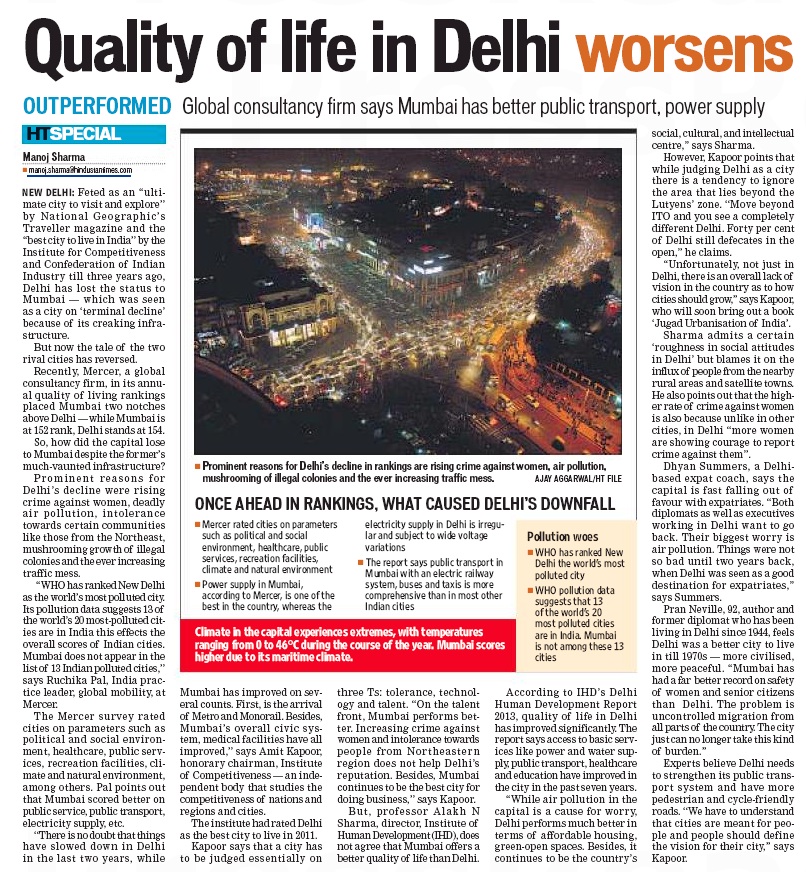Sustainability has moved beyond being a trend to a policy imperative. Historically unviable consumption levels and energy usage patterns have effected ecological fragility and even ecological collapse in parts of the world. There is a looming threat that approximately three billion people will experience chronic water scarcity globally. The global GDP may suffer a loss of 18 per cent by 2050 if necessary action is not taken against the changing environment. The international society has an emergent consciousness that appreciates the need to discover alternate pathways for development, and urgently so.
The greening of economic growth ensures that it is lasting and does not hamper our future abilities to meet resource needs. A healthy natural ecosystem also yields better returns from all the economic activity it hosts and higher well-being for the people it shelters. India’s size, geopolitical influence, and heterogenous natural endowments entail the country’s major share of responsibility in the fulfilment of global sustainable development goals. The cost of environmental degradation is seldom borne by the perpetrators but rather by the poor, the local communities, and those who are socially and economically vulnerable. Climate-change-induced crises like global warming are expected to impact India and its marginalized significantly. Recently, former US secretary of state Hillary Clinton announced a special climate resilience fund identifying heat as an impending ecological challenge for the informal workers in the country.
India’s budget 2023-24 has taken stock of this global consciousness and listed ‘Green Growth’ as one of the saptarishi or seven key priorities for inclusive development. The aim is for India to create large-scale green employment, reduce carbon intensity and transition into a net-zero carbon emission economy by 2070. An outlay of ₹19,700 crores for the National Green Hydrogen Mission and ₹35,000 crores for priority capital investments to facilitate energy security and transition are integral fiscal stimuli of this component. Energy storage projects, systemic integration and transmission of renewable energy are encouraged through earmarked funds and infrastructural support.
Poetically penned, PM-PRANAM (PM Programme for Restoration, Awareness, Nourishment and Amelioration of Mother Earth), Amrit Dharohar, MISHTI (Mangrove Initiative for Shoreline Habitats & Tangible Incomes) focus on ecological conservation, involving local communities where feasible. The Green Credit Programme aims to bring about behavioural changes for environment-responsive action. Another flagship green initiative of the government is the vision for ‘LiFE’ – Lifestyle for Environment. It was introduced by the Prime Minister at COP26 in Glasgow and advocates for an environmentally conscious lifestyle at the level of individuals, communities and institutions.
In addition to the budget’s fiscal impetus, India’s journey towards greener growth acknowledges, and should further solidify, the bid to alter behaviour to achieve the climate goals. More than any of the other identified themes and sub-themes, Green Growth requires fundamentally rethinking our routine way of living. Other areas like digital transformation endorse their value and speak for themselves; the convenience of using digital payment methods makes it easier to shift away from a cash-based system. Although a shock such as the pandemic and the entailing restrictions on physical contact jump-started the behaviour change, once altered, the behaviour encashed immediate benefits in the form of higher convenience for the consumers. Industries could easily lower their transaction costs and increase profit margins.
In such a case, the mere availability of capacity and infrastructure to support the digital transformation begins a virtuous cycle of usage and normalisation. On the other hand, there are no immediate and tangible returns for environmentally-conscious behaviour that further incentivize it. Buying eco-friendly products, weaning off chemical fertilizers or shifting to electric vehicles burn a hole in the pocket before any long-term environmental and cost benefits are realised. The task of the national policy framework is thus to make such conduct the easier choice to make.
Recent research by the OECD and Harvard University surveyed more than 40,000 respondents in twenty countries that represented 72 per cent of the global CO2 emission to reveal that support for climate policies is dependent on three major factors – the perceived effectiveness of the policies in reducing emissions, their perceived distributional impacts on lower-income households (inequality concerns), and their own household’s gains and losses. Due to high vulnerability to climate change’s adverse effects, the findings for India showed that 72% of people believe climate change will affect their life and humankind, as opposed to 16% in Denmark. Over and above accepting the gravity of the situation, Indians at the lower echelons need surety that the long-term benefits will reach them to induce any significant lifestyle changes.
Habits and behaviours will be crucial to India’s green transition, particularly due to its sizable population. At the individual level, the typical Indian’s lifestyle has habitually been sustainable, albeit out of economic necessity. There is a culture of thrifting, recycling, reusing, and mindful consumption. Nevertheless, inequality, poverty, and lack of access to resources increase the mental burden of survival concerns, leaving little space to make sustainable life choices – especially when they require more awareness or initial capital. A citizen and community-centric approach to green advocacy, robust legal regulations, and a generous dose of subsidies will garnish higher perceived trust and benefits for climate policies – making it the default choice. The primary focus should be on enabling quicker returns on greening for those who disproportionately bear the burden of its lack thereof.
The article was published with Business World on March 4, 2023.

